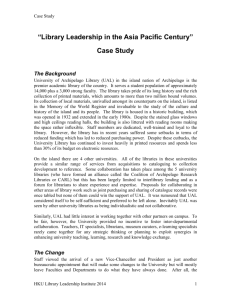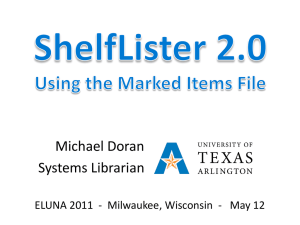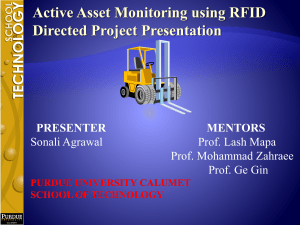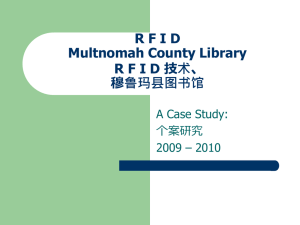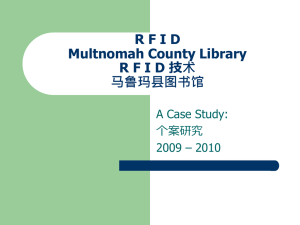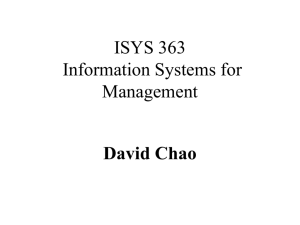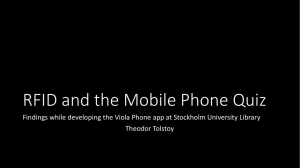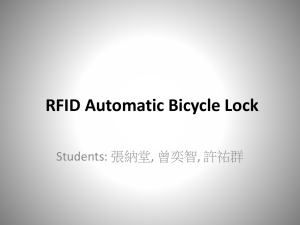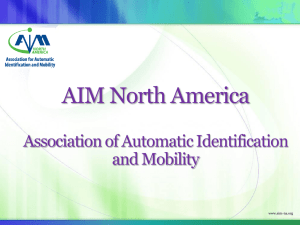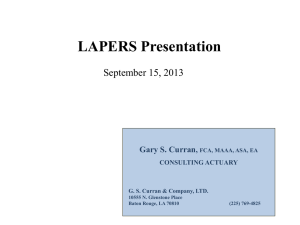(r)evolutionary changes at University of the Arts London
advertisement
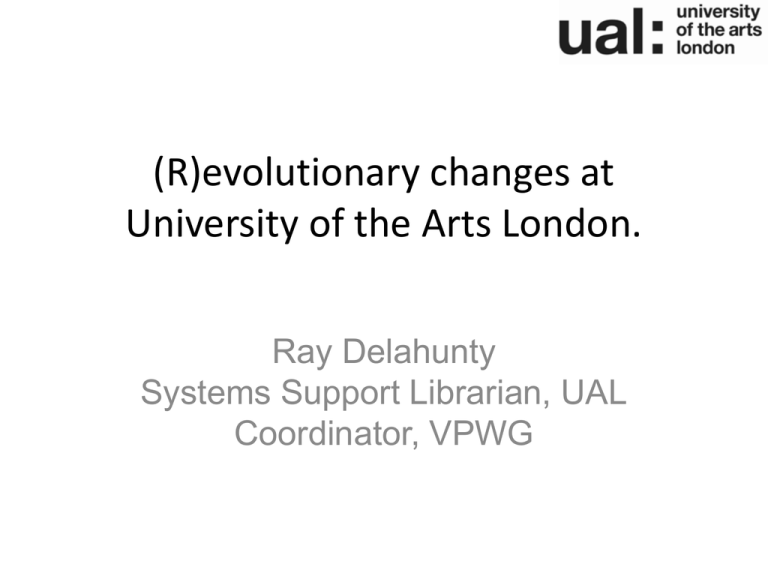
(R)evolutionary changes at University of the Arts London. Ray Delahunty Systems Support Librarian, UAL Coordinator, VPWG Overview • Introduction to UAL • The triggers and (some of ) the changes • centralizing bibliographic services, requiring the restructuring Voyager acquisitions • selection & implementation of a new discovery product • migration to IT-hosted linux from our own Sun servers • opening a new college library • selection and implementation of RFID solution, and new “service model” • The benefits • The (painful) lessons learned 6 colleges 1 university The triggers- 2011 Funding cuts- the biggie! New home for CSM Old Servers? Server MoveEaster 2011 • Solaris versus Red Hat Linux. They are NOT the same! • The more customized your solution is the more chances there are for things to go wrong- mail vs mailx etc. etc. • UAL IT policies often appeared to be at conflict with the needs of a public-facing, high profile library service. • UAL architecture. Firewalls. Z39.50 • What we should have done- handed the system to Ex Libris Selection of Summon Go Live August 2011. • MetaLib interface unpopular • March saw a full tender process with “playoff” between Primo and Summon later • Coverage of arts materials very similar across vendor products • Decision based particularly on price. Summon is without federated search. • Voyager data is fed nightly to Summon by cron. Implementation was not difficult but... Staff changes January - August Centralised bibliographic service RFID The CSM move. During the summer closed period. • Two libraries (40K and 50K bibs) closed and reopened 3 months later at new site. • Ex Libris Data Services schedule not suitable- data work needs to be booked far ahead. • Work was done by a combination of Access reports and Gary Strawn’s LocationChanger, and zealous chasing to ensure manual cleanup work was done. • Locking down access to obsolete locations came back to bite us at FPC 2012. Centralising Resources and Systems August - December. • The library systems manager role was removed. • Acquisitions work previously devolved to colleges was brought into the new central bibliographic services team that was created- 4 library assistants, 2 assistant librarians and a team leader librarian. • New workflows were developed to make use of EOD and bulk imports to create POs and line items. Manual order entry changed to automatic in 2/2012. • Other manual workflows were automated including using Webadmin, and MarcEdit, much to the delight of one vendor (and our staff). The RFID Project. • A very rapid project was undertaken to establish a “new service model”. After a tender and selection process 3M provided UAL with an RFID solution. • Voyager self service functionality was found to be seriously flawed, threatening the effective implementation of the new “service model” • Script-driven repair of the Voyager functionality bugs. • Digital library assistants (very un-PC!!) RFID project timetable Procurement Start Project Start Procurement ends Tagging starts Tagging ends Project ends Sorter Extending RFID and the “new Service model”. • Command Center • Clarion Web for the new 9100 RF security gates. • Roaming / roving library staff rather than “library desks”. • Problems remain- we have new kit. Benefits Benefits What next? • Better and more staff training • Modify reports (eg fund snapshot) for local needs. • EDI invoicing • Move to Voyager 8, and unpick Dawsons coding- maybe item creation- shelf ready books • Full stocktake using lessons learned in trial • Deal with data problems- the stocktake revealed lots of issues. Lessons learned • Develop better relationship with IT • Don’t underestimate the complexity of the move to linux • The more localised your system is the bigger the challenges in changing it • Localisations may be broken in upgrades • (And you would think this one is obvious...) Learn about and use the system functionality.

